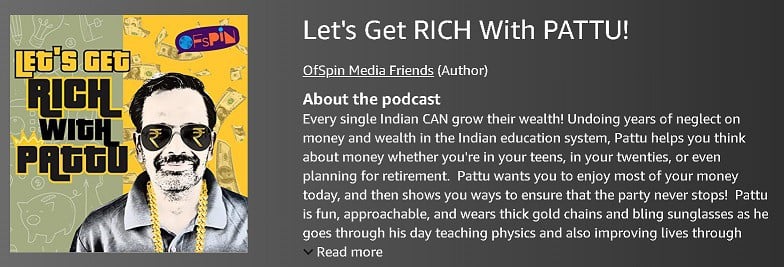Last Updated on October 1, 2023 at 9:09 pm
A multi-asset mutual fund is a new fund category introduced by SEBI. It has the mandate to invest at least 10% each in equity, debt and gold or permitted commodities at all times. We discuss the nature of available multi-asset funds, when investors should consider them and what to expect. We also consider if these funds can be considered as an alternative to large cap or other diversified funds instead of index funds.
The first problem with these funds is the limit on only 10% of the assets on each asset class. This means within the same category one can find multi-asset funds with strategic asset allocation and tactical asset allocation.
That is funds that define the proportion of equity, debt and commodities and then rebalance the portfolio each month according to that strategy or tactically vary the asset allocation with a combination of defined rules or qualitatively as per “prevailing or impending market or economic conditions”.
Join 32,000+ readers and get free money management solutions delivered to your inbox! Subscribe to get posts via email! (Link takes you to our email sign-up form)
🔥Want to create a complete financial plan? Learn goal-based investing? Exclusive access to our DIY tools? Increase your income with your skills? Enjoy massive discounts on our robo-advisory tool & courses! 🔥
So within the same category of nine existing funds plus three new kids on the block – Motilal Oswal Multi-Asset Fund, Tata and Nippon India Multi-Asset Funds -,we can have debt-oriented funds (Nippon, Motilal Oswal) or equity-oriented funds (ICICI, HDFC, Axis) or funds with variable tax status (Quant, SBI).
This makes three aspects clear. One, star rating* if of no use – for all fund categories but it is easy to understand why here. That would be a comparison of apples with tomatoes grouped together because of their colour. * This category is only about two years and two months old. Therefore most star rating algorithms have not yet rated them.
Two, unless an investor is clear about why they are investing and what role a multi-asset fund should accomplish, they should stay away from this category. Three, with only two years of performance to consider, past performance is of no significance.
Asset Allocation History of Multi-Asset Funds
The monthly equity allocation history of multi-asset mutual funds is plotted below. Quant Multi-asset fund (black) has changed equity allocation by huge amounts. Technically it is a dynamic asset allocation that invests in three asset classes.

Essel Multi-asset (blue dot reaching up to 90%) has also reduced equity allocation below 65% once from May 2018. SBI Multi-asset (red) has remained a “non-equity fund” but its equity allocation can increase up to 80% according to its KIM (key information memorandum). Equity levels for the other funds – Axis, HDFC and ICICI have not varied as much.
When do multi-asset funds make sense? The first consideration is the investment duration. AMCs like HDFC recommend them for “three years and above”. Their fund can invest 65-80% in equity! So avoid them for short-term goals say less than five years (this is an arbitrary definition).
For 5-10 years you can only use them in a small amount (say 20-30%) and it must be the only equity-oriented fund in the portfolio. For long goals, it should at least be the core equity holding. Otherwise, the benefit of the three asset classes and periodic rebalancing among them would be lost.
Naturally, a multi-asset fund can be the only fund of a long-term portfolio but the equity allocation mandate of the portfolio should be narrow. The 65-80% limit for HDFC multi-asset fund, Axis Triple Advantage Fund and ICICI Multi-asset fund are suitable for this purpose.
However one could argue that an aggressive hybrid fund would also behave similarly and is simpler to understand with little chance of change in tax status.
What to expect: The standard deviation (a measure of daily volatility) for different ICICI funds is tabulated below. Notice that the Multi-asset fund is only a bit less volatile than a diversified large cap fund. Therefore a multi-asset fund that predominantly invests in equity should be considered as on with respect to risk ignoring the allocation to debt and gold (or other commodities).
| Fund | 1Y | 2Y |
| ICICI Pru Equity & Debt Fund(G)-Direct Plan | 7.27 | 5.69 |
| ICICI Pru Multi-Asset Fund(G)-Direct Plan | 7.32 | 5.63 |
| ICICI Pru Balanced Advantage Fund(G)-Direct Plan | 6.59 | 4.89 |
| ICICI Pru Bluechip Fund(G)-Direct Plan | 8.92 | 6.93 |
SBI Multi-asset with its lower equity allocation (by choice, not mandate) registered standard deviations of 4.3% and 3.2% over the last 1 and 2 years respectively. During a crash and bear market, this may seem inviting but adequate maturity is necessary to hold such funds during a bull run.
The same is also true If you wish to opt for multi-asset funds with lower equity ceiling – 50% in the case of Motilal Oswal and Nippon funds. In this case, lower return expectation would be in order along with appropriate investment allocation.
My investments in ICICI Multi-asset fund: About 1/3rd of my son’s future portfolio is invested in ICICI Multi-Asset Fund from Jan 2011 when it was ICICI Dynamic. Due to a combination of my inertia and confidence that a fund with 10,000 plus Crores AUM will change tax status from equity to debt, I have stayed put. I have not noticed any perceivable benefit in terms of risk or reward after the fund changed mandate.
To summarise, the benefit of the multi-asset will be clear only if equity exposure is not too high. This would reduce volatility, potential returns and change the taxation status to debt. If you wish to invest in an “equity-oriented” multi-asset fund an aggressive hybrid fund should at least be as good a choice. We need more time (data) to define a pattern of risk vs reward for this category.
🔥Enjoy massive discounts on our courses, robo-advisory tool and exclusive investor circle! 🔥& join our community of 7000+ users!
Use our Robo-advisory Tool for a start-to-finish financial plan! ⇐ More than 2,500 investors and advisors use this!
Track your mutual funds and stock investments with this Google Sheet!
We also publish monthly equity mutual funds, debt and hybrid mutual funds, index funds and ETF screeners and momentum, low-volatility stock screeners.





- Do you have a comment about the above article? Reach out to us on Twitter: @freefincal or @pattufreefincal
- Have a question? Subscribe to our newsletter using the form below.
- Hit 'reply' to any email from us! We do not offer personalized investment advice. We can write a detailed article without mentioning your name if you have a generic question.
Join 32,000+ readers and get free money management solutions delivered to your inbox! Subscribe to get posts via email! (Link takes you to our email sign-up form)
About The Author
 Dr M. Pattabiraman(PhD) is the founder, managing editor and primary author of freefincal. He is an associate professor at the Indian Institute of Technology, Madras. He has over ten years of experience publishing news analysis, research and financial product development. Connect with him via Twitter(X), Linkedin, or YouTube. Pattabiraman has co-authored three print books: (1) You can be rich too with goal-based investing (CNBC TV18) for DIY investors. (2) Gamechanger for young earners. (3) Chinchu Gets a Superpower! for kids. He has also written seven other free e-books on various money management topics. He is a patron and co-founder of “Fee-only India,” an organisation promoting unbiased, commission-free investment advice.
Dr M. Pattabiraman(PhD) is the founder, managing editor and primary author of freefincal. He is an associate professor at the Indian Institute of Technology, Madras. He has over ten years of experience publishing news analysis, research and financial product development. Connect with him via Twitter(X), Linkedin, or YouTube. Pattabiraman has co-authored three print books: (1) You can be rich too with goal-based investing (CNBC TV18) for DIY investors. (2) Gamechanger for young earners. (3) Chinchu Gets a Superpower! for kids. He has also written seven other free e-books on various money management topics. He is a patron and co-founder of “Fee-only India,” an organisation promoting unbiased, commission-free investment advice.Our flagship course! Learn to manage your portfolio like a pro to achieve your goals regardless of market conditions! ⇐ More than 3,000 investors and advisors are part of our exclusive community! Get clarity on how to plan for your goals and achieve the necessary corpus no matter the market condition is!! Watch the first lecture for free! One-time payment! No recurring fees! Life-long access to videos! Reduce fear, uncertainty and doubt while investing! Learn how to plan for your goals before and after retirement with confidence.
Our new course! Increase your income by getting people to pay for your skills! ⇐ More than 700 salaried employees, entrepreneurs and financial advisors are part of our exclusive community! Learn how to get people to pay for your skills! Whether you are a professional or small business owner who wants more clients via online visibility or a salaried person wanting a side income or passive income, we will show you how to achieve this by showcasing your skills and building a community that trusts and pays you! (watch 1st lecture for free). One-time payment! No recurring fees! Life-long access to videos!
Our new book for kids: “Chinchu Gets a Superpower!” is now available!


Must-read book even for adults! This is something that every parent should teach their kids right from their young age. The importance of money management and decision making based on their wants and needs. Very nicely written in simple terms. - Arun.Buy the book: Chinchu gets a superpower for your child!
How to profit from content writing: Our new ebook is for those interested in getting side income via content writing. It is available at a 50% discount for Rs. 500 only!
Do you want to check if the market is overvalued or undervalued? Use our market valuation tool (it will work with any index!), or get the Tactical Buy/Sell timing tool!
We publish monthly mutual fund screeners and momentum, low-volatility stock screeners.
About freefincal & its content policy. Freefincal is a News Media Organization dedicated to providing original analysis, reports, reviews and insights on mutual funds, stocks, investing, retirement and personal finance developments. We do so without conflict of interest and bias. Follow us on Google News. Freefincal serves more than three million readers a year (5 million page views) with articles based only on factual information and detailed analysis by its authors. All statements made will be verified with credible and knowledgeable sources before publication. Freefincal does not publish paid articles, promotions, PR, satire or opinions without data. All opinions will be inferences backed by verifiable, reproducible evidence/data. Contact information: To get in touch, use this contact form. (Sponsored posts or paid collaborations will not be entertained.)
Connect with us on social media
- Twitter @freefincal
- Subscribe to our YouTube Videos
- Posts feed via Feedburner.
Our publications
You Can Be Rich Too with Goal-Based Investing
 Published by CNBC TV18, this book is meant to help you ask the right questions and seek the correct answers, and since it comes with nine online calculators, you can also create custom solutions for your lifestyle! Get it now.
Published by CNBC TV18, this book is meant to help you ask the right questions and seek the correct answers, and since it comes with nine online calculators, you can also create custom solutions for your lifestyle! Get it now.Gamechanger: Forget Startups, Join Corporate & Still Live the Rich Life You Want
 This book is meant for young earners to get their basics right from day one! It will also help you travel to exotic places at a low cost! Get it or gift it to a young earner.
This book is meant for young earners to get their basics right from day one! It will also help you travel to exotic places at a low cost! Get it or gift it to a young earner.Your Ultimate Guide to Travel
 This is an in-depth dive into vacation planning, finding cheap flights, budget accommodation, what to do when travelling, and how travelling slowly is better financially and psychologically, with links to the web pages and hand-holding at every step. Get the pdf for Rs 300 (instant download)
This is an in-depth dive into vacation planning, finding cheap flights, budget accommodation, what to do when travelling, and how travelling slowly is better financially and psychologically, with links to the web pages and hand-holding at every step. Get the pdf for Rs 300 (instant download)